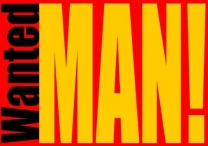History Behind the U.S. Flag
The War of 1812, also known as the Second War of Independence, was when the
flag made a strong impact on our country. During this war, before the British
came to Baltimore's Fort McHenry, Major George Armistead the commandant of this
fort stated to his superior officer General Samuel Smith that "We, sir are
ready at Fort McHenry to defend Baltimore against invading by the enemy...
except that we have no suitable ensign (Flag of The U.S.) to display over the
Star Fort, and it is my desire to have a flag so large that the British will
have no difficulty in seeing it from a distance."
General Smith agreed and
hired Mary Pickersgill to sew a 30' x 42' flag. This flag was finished and
delivered to Fort McHenry on August 19, 1813 for $405.90. The British captured
Dr. William Beanes and held him on their boat in the Patapsco River. A 34 year
old lawyer/poet born in Frederick County Maryland known as Francis Scott Key and
Colonel John S. Skinner boarded a U.S. truce ship, to talk to the British about
releasing Dr. Beanes. Before the release of Dr. Beanes, the British held all
three people behind enemy lines until they finished the unsuccessful 25 hour
bombardment on Fort McHenry.
The British fired 1,800 bombs, rockets, and shells
of which 400 landed on the fort leaving 4 dead and 24 injured. During the
bombardment, Key watched the enemy rockets and bombs burst in the air that
surrounded Fort McHenry's giant flag. In the morning, he saw far in the distance
a flag waving it's red and white stripes with bright stars and began to write
the words for "The Star-Spangled Banner."
Shortly after this battle,
this song which has powerful feelings of patriotism for our country became a
very popular song in Balitmore. This song started to appear in newspapers,
magazines, and books.
Once the Civil War started, "The Star-Spangled
Banner" became very popular for the Nothern forces. A drive began in
congress to adopt this song as our nations anthem during World War I. Some
strong supporters of making this song our national anthem included Maryland
Congressman J. Charles Linthicum and Mrs. Ruben Ross Holloway of Baltimore.
On
March 3, 1931, their successful movement was finally over. President Herbert
Hoover signed his name to Public Law 823, making "The Star-Spangled
Banner" the national anthem for the United States of America.

